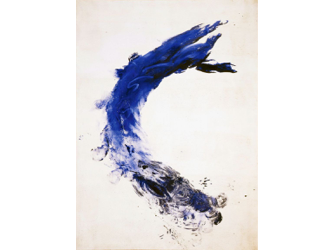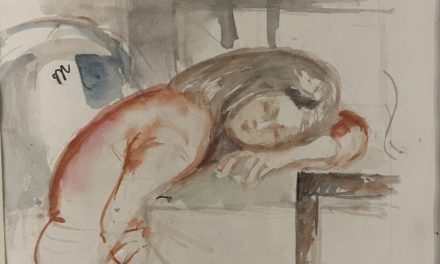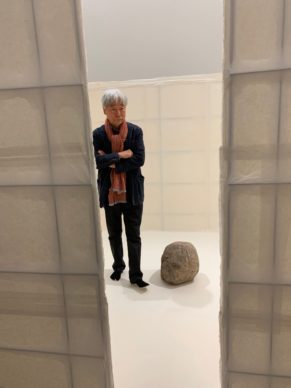They are able to express their contradictions and allow them to play out on canvas, creating a sort of tension that appeals to the viewer’s emotions. One artist of the modern period who was most adept at embracing his own inner conflicts is Balthus (1908-2001).
This artist of Polish origin who lived in Paris for a time, moving in modern avant-garde circles – he also made a significant impact during his sojourn in Rome as director of the Villa Medici (the French Academy in Italy) and ended his days in a huge Swiss chalet in Rossinière – was unrivalled in his ability to play with his conflicting desires on canvas.
This talent is on full display in the successful yet modestly sized exhibition (40 artworks) showing at the Beyeler Foundation in Basel until 1 January.
Loans of his artworks are clearly remarkably difficult to obtain in Europe, with a large number of the works belonging to private collections. Those who saw it will have fond memories of the exhibition held in 2013 at the Metropolitan Museum in New York, which was of a very high quality despite being limited to “Balthus: Cats and Girls”.
According to Michiko Kono, co-curator of the exhibition at the Beyeler Foundation, “Balthus was drawn to luxury, to certain living standards of the upper classes, and positioned himself within the painting tradition of the old masters who have now become classics (Poussin, Piero della Francesca…) but at the same time he wanted to achieve fame by causing a scandal, to throw off the shackles of orthodoxy of the rules of good taste in painting, and to escape from convention.”
We know he flirted with Surrealism, but here we learn that he also seems to have been inspired by popular art.
His entire completed oeuvre is in fact characterized by two major tendencies that can also overlap: eroticism and surrealism.
In order to create, Balthus operated on a principle of creating a freezeframe image after moving his models into position.
Towards the end of his life his hands shook so much that he was forced to switch to using Polaroids, which he would do intensively.
Every scene raises questions. A young girl with the physicality of a doll displays her plump body to the viewer, one leg resting on a chair, one hand playing with her hair, staring into space. Behind her there’s an old woman. In the foreground there’s a magnificent still life in miniature featuring a carafe and some fruit. “La toilette de Georgette” from 1948-49, which is largely unknown, dates from the 1940s. The painting depicts the wanton young woman as an archetype.
Earlier on, she appears in more detail. “Thérèse Dreaming” depicts a young girl with her hands behind her head, one foot on a stool revealing a glimpse of her white underwear while a cat laps milk beside her. A European Lolita from 1938.
But we cannot reduce Balthus to simply being an admirer of coquettish young girls. He produced a kind of art that was certainly mischievous, but it was also knowing. This is attested to by the monumental double version of his most famous street scene, the Passage du Commerce-Saint-André in Paris. A first version dates from 1933. The second is from 1952-53. Each figure in the painting goes about their own business as though in isolation from the others, without us being able to give meaning to their actions.
In Paris I met his widow Setsuko in her studio, a woman of extraordinary elegance whom Balthus painted in his famous piece “The Turkish Room”, which is currently on display in Basel and belongs to the Centre Pompidou’s collection. She is herself an artist; she paints and she also makes ceramics for Astier de Villatte. She recounts a few anecdotes about the painter’s life and their life together between 1962 and 2001. In her view, for Balthus as for all great artists, an air of mystery is the mark of a true masterpiece.
The mystery of Balthus is the very essence of his painting.
Until 1 January. Basel. www.fondationbeyeler.ch
Support independent news on art.
Your contribution : Make a monthly commitment to support JB Reports or a one off contribution as and when you feel like it. Choose the option that suits you best.
Need to cancel a recurring donation? Please go here.
The donation is considered to be a subscription for a fee set by the donor and for a duration also set by the donor.














